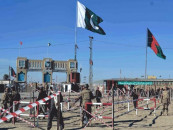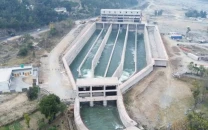India’s planned investment in Afghanistan
As US shrinks its military footprint undertaking large infrastructure projects will get more problematic than before.

This aggressive Indian bid for a stake in Afghanistan’s natural resource potential comes against a backdrop of several important developments. Since last year, as it has become evident that the US is moving towards a structured withdrawal of combat troops, Indian policy on Afghanistan has come under intense scrutiny and debate in India. The bid for the Hajigak contract by Indian firms, which includes two prominent state-owned entities, signals an end to recriminations of years gone by. At the same time, it serves as a clear policy statement, investing confidence in India’s ability to navigate the changes taking place in Afghanistan.
Moving away from an aid and reconstruction engagement, India like China, seeks to invest in the long-term development of Afghanistan’s abundant natural wealth. Clearly, there are strong geopolitical undertones to this proposed investment; with this bid India positions itself to compete with China in the resource-rich southern Central Asia, while signalling to Pakistan that Indian stakes in Afghanistan’s future go beyond and are independent of the timelines of the US/Nato military presence.
However, the problems that have plagued the success story of the Aynak Copper mines in 2008, awarded to the Chinese consortium, should serve as a cautionary reminder to the Indians. China continues to grapple with several issues at its copper mine in Aynak, including local resentment; security problems; and the unearthing of ancient religious relics, which have all delayed the project from taking off. Significantly, the $800 million mobilisation advance provided by the Chinese to the Afghan government, which was to cover the cost of the deployment of a 1,500 member special security force to guard the Aynak mines, has already been utilised with no sign of the police force.
Another ominous reminder of the problems associated with developing large infrastructural projects amidst war and insecurity is the rehabilitation programme of the old 1950s US-funded Kajaki Dam in Helmand province. The US, which had bombed the dam in 2001, started repairing the power plant in December 2004 and has had several problems since.
As the US shrinks its military footprint and most Nato countries prepare to withdraw their combat troops by 2014, guarding and undertaking large infrastructure projects is likely to get more problematic than before. With this proposed investment, India is likely to be even more invested in the security status quo and the general drift of the US war strategy in Afghanistan, even more so than some Nato member countries such as Britain and Germany. However, the sands of security are likely to shift with the impending shrinkage of US/Nato combat troops on the ground. India has two options: to patiently sit out the impending period of chaos and risk, sinking a large investment in project delays, or to gradually expand its role as a security actor in order to protect its investments and role. Both options have enormous costs which Delhi must ponder before it ‘irons’ its resolve to go ahead with the Hajigak investment.
Published in The Express Tribune, September 10th, 2011.



















COMMENTS
Comments are moderated and generally will be posted if they are on-topic and not abusive.
For more information, please see our Comments FAQ